Overview
Successful data protection is reliant on the client agent services being running and accessible. The below guide will detail the required components, how to verify the agent status, troubleshoot connectivity, and the process of collecting diagnostic logs.
Services
The first step is to verify if the Commvault services are running.
From the start menu, access the Commvault Process Manager.
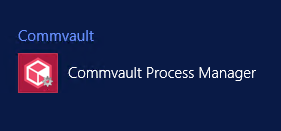 On the first page, take note of the instance, Commserve hostname, and install path:
On the first page, take note of the instance, Commserve hostname, and install path:

Next, select the Services tab. Services can have several statuses:
| Running |
| Stopped |
| Restarting |
Verify whether the services are running or stopped. In this example, all services are running:
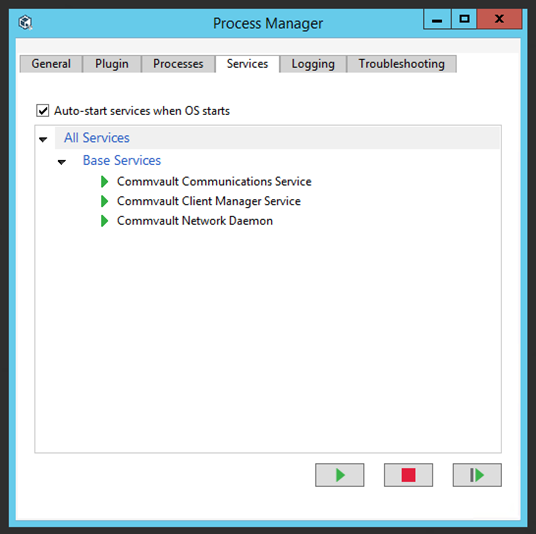
However, in this example all services have stopped:
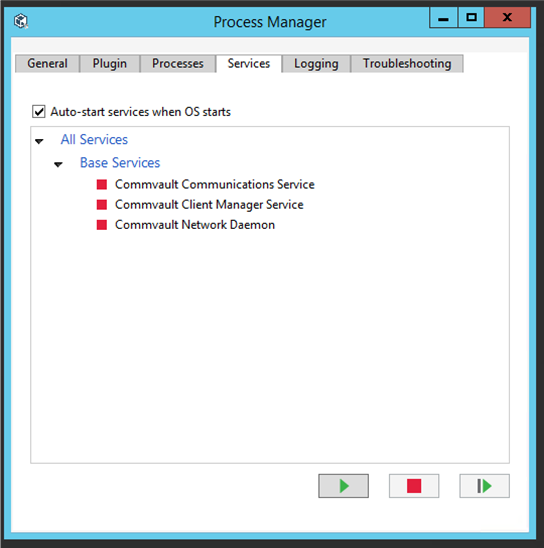
Either all services or specific services can be specified by selecting the corresponding level in the tree. Those/that service can be resumed by selecting the green arrow at the bottom.
Networking
Ping
The first step to verify the network is to test connectivity to the Commserve. Using the hostname gathered above, attempt to ping the Commserve from a command prompt using the following command
|
In the below example, the Commserve replied to the ping attempts:
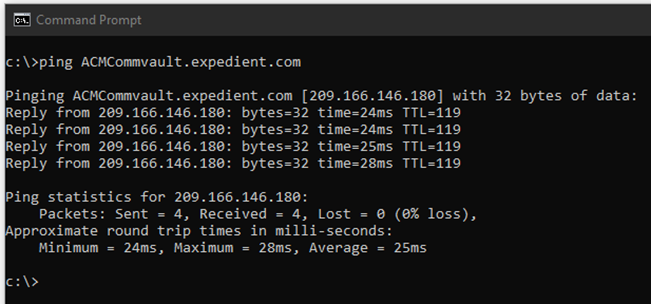
However, if ping fails no replies will be received and the request will timeout:
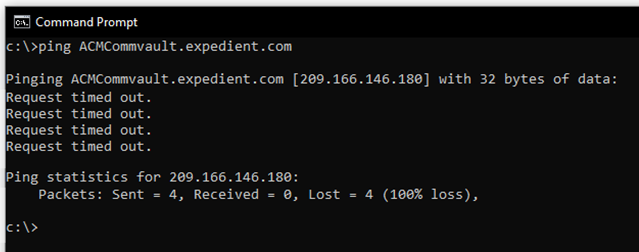
Server Public IP
The public IP of the client will need to be whitelisted. If it’s already known, update the ticket with the test results along with that information.
This will show the IP address that will need to be provided to support.
Netstat
The Commvault software communicates with the data protection environment using a secure persistent tunnel over port 8450.
The next troubleshooting step is to verify whether a session has been established. Once again from a command prompt, run this command:
Netstat -an | findstr 8450For example, the below output shows an established session with the Commserve IP over port 8450.

Commvault Diagnostics
If communication with the Commserve is unsuccessful, a manual log bundle can be created and attached to the SMC support ticket for further analysis. This can either be done by request of the support engineer or if the above troubleshooting steps have not corrected the communication issue.
The CvDiagnostics operation bundles together all relevant logs (both OS and Commvault) as well as installation configuration into a single compressed folder. The executable can be found in the Base folder of the home directory. For this command, we will need the Commvault instance number (found in the Process Manager found above) and a temporary staging location for the compressed folder.
|
For example, for the standard home directory of c:\Program Files\CommVault\Simpana\Base, default instance of Instance001, and an output folder of c:\temp, the following command would be used:
cd c:\Program Files\CommVault\Simpana\Base
CvDiagnostics.exe -vm Instance001 -output c:\tempSample output:

Once the bundle has been created, it can then be uploaded to the ticket via the SMC interface.


